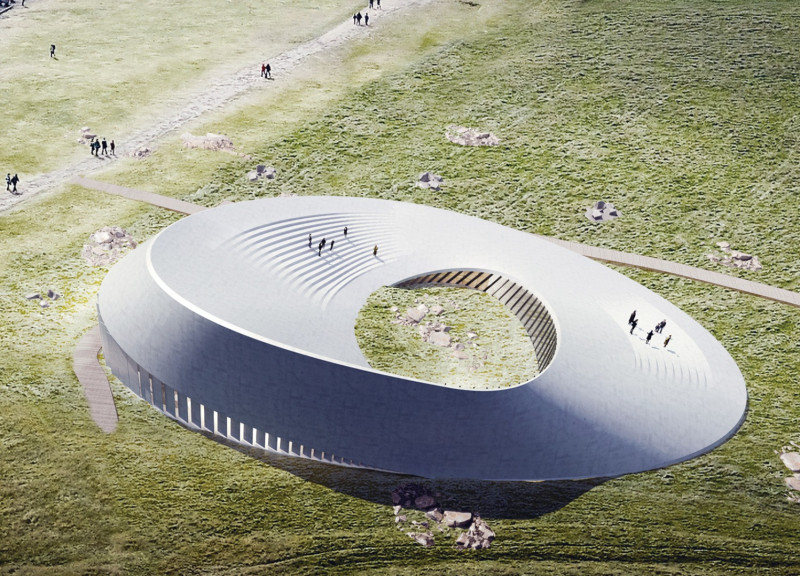5 key facts about this project
The Iceland Volcano Museum is located in the stunning landscapes of Iceland and serves as a space for education and cultural exploration. It focuses on volcanic activity and its impact on the region, allowing visitors to connect with the natural environment. The design is inspired by the surroundings, taking the form of cooled magma to create a structure that blends into the landscape and minimizes visual disturbance.
Design Concept
At the core of the museum's design is a Möbius strip. This unique geometric shape reflects a minimalist approach that emphasizes clean lines and open spaces. By utilizing this form, the museum creates a sense of flow and continuity throughout the building. The design invites visitors to explore the various areas while appreciating the simplicity that underpins its structure.
Spatial Organization
The museum includes forum-like steps that connect with the slope of the terrain. These steps offer accessible pathways and encourage visitors to engage with the beautiful scenery. From higher vantage points, guests can enjoy views of Mývatn and Hverfjall, making nature a key component of the museum experience. This thoughtful layout enhances interaction between the space and the surrounding landscape.
Facade and Light
The building features two distinct north-facing glazed facades. One facade opens towards the inner circle, allowing natural light to fill the gallery area. The other facade, with its gradient of columns at the entrance, creates a varied visual experience. Depending on the viewer's angle, the building can appear more open or more enclosed. This design encourages visitors to experience the interior in different ways.
Interior Connectivity
Inside, the museum divides public areas from administrative spaces, giving visitors a clear navigation route. A central core provides vertical connections through an elevator and rounded stairs. This organization not only supports accessibility but also promotes movement throughout the exhibition and support areas.
The design culminates in layered terraces, inviting visitors to walk and enjoy the natural beauty around them, while also providing views of the dramatic volcanic features that define the landscape.






















































